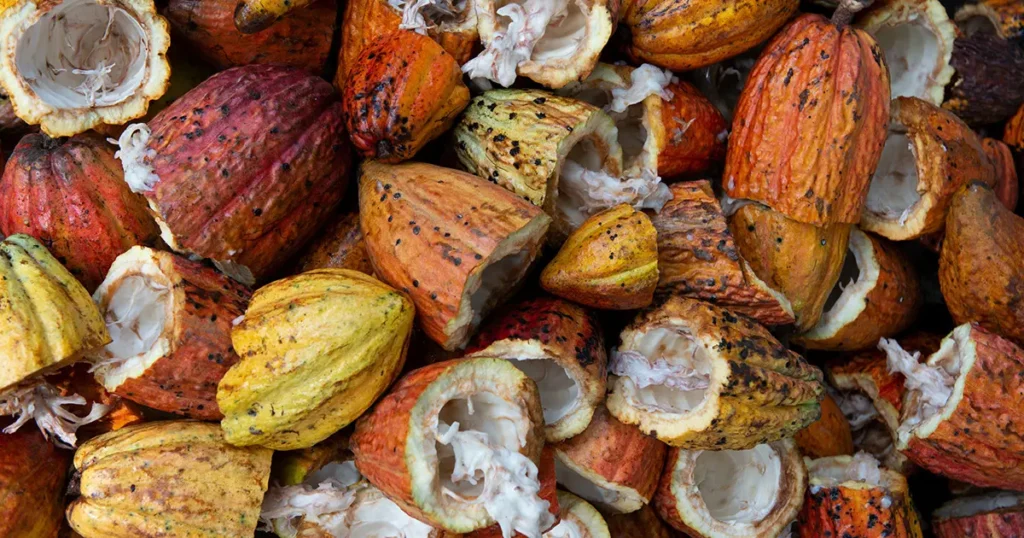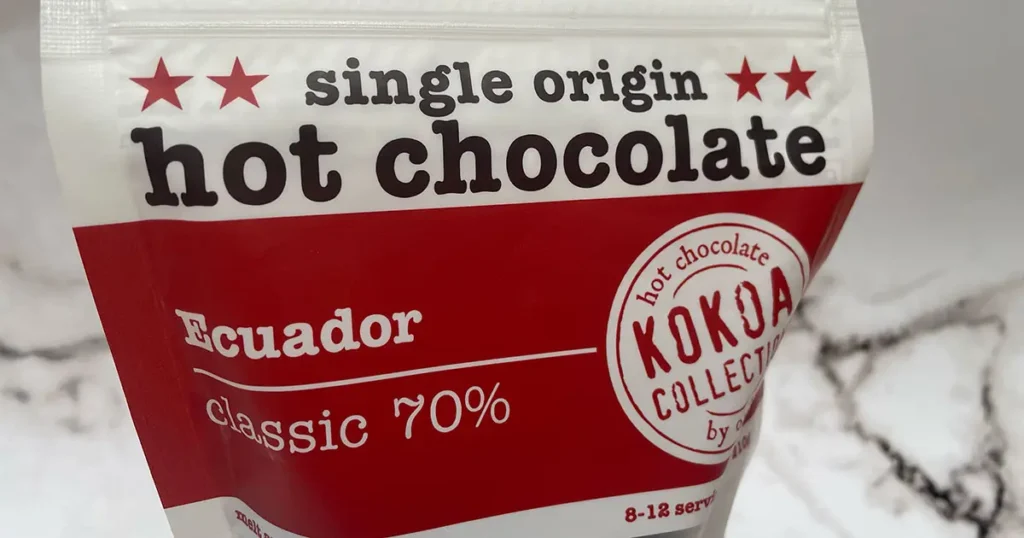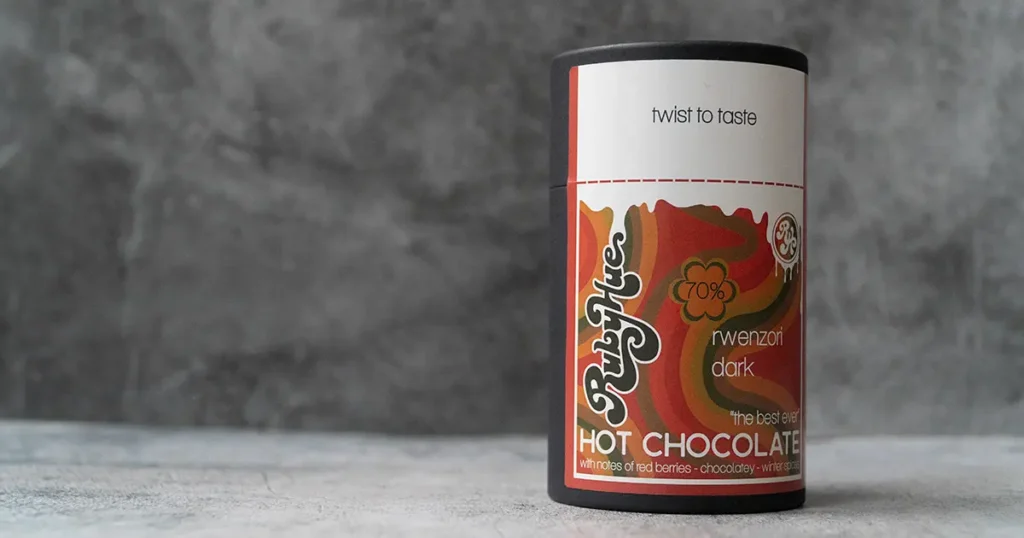Dutch cocoa, also known as Dutched chocolate, is a culinary staple that stands out for its unique treatment with alkalising agents. This process, pioneered by Coenraad Johannes van Houten, not only enhances the cocoa’s solubility in water but also moderates its natural acidity, resulting in a smoother and richer chocolate taste.
Table of Contents
Dutch Cocoa: A Culinary Delight
In an earlier blog, I explored the difference between cacao and cocoa powder but understanding the nuances between Dutch cocoa and natural cocoa is also essential for culinary enthusiasts and professionals alike, as it significantly influences the outcome of chocolate-based recipes.
The distinction between Dutch and natural cocoa is crucial. Each type brings its own set of characteristics to baked goods and chocolate confections, affecting everything from taste and colour to chemical reactions during baking.
For those passionate about creating the perfect chocolate dessert or enhancing their culinary creations, exploring the specifics of Dutch cocoa offers valuable insights into food science and recipe development.
Historical and Scientific Background
The Revolutionary Invention of Coenraad Johannes van Houten
The story of Dutch cocoa begins in the early 19th century with Coenraad Johannes van Houten, a Dutch chemist whose name has become almost synonymous with the chocolate industry’s transformative period.
The Cocoa Press: Paving the Way for Dutch Cocoa
Van Houten’s groundbreaking invention, the cocoa press, in 1828, significantly reduced the cocoa butter content in cocoa beans, leading to a drier and more concentrated cocoa powder.
Alkalising Cocoa: The Birth of the Dutch Process
However, it was his subsequent method of treating this cocoa powder with alkaline salts that truly revolutionised the world of chocolate.
This innovative process, known as “Dutching,” involved neutralising the natural acidity of cocoa powder. The alkalisation made the cocoa less bitter and more mellow, enhancing its flavour profile. This was a significant departure from the more astringent taste of natural cocoa, which retained its inherent acidity.
The Dutch process also altered the physical properties of the cocoa powder, making it darker in colour and more soluble in water. These changes not only improved the aesthetic appeal of chocolate products but also their versatility in culinary applications.
Enhancing Chocolate’s Culinary Flexibility
The impact of Van Houten’s contribution cannot be overstated.
By making cocoa powder more palatable and easier to work with, he opened up new avenues for chocolate’s use in baking and beverage preparation. Gourmet desserts and luxurious hot chocolate drinks, once limited by the bitter and acidic nature of natural cocoa, could now achieve a richer, smoother chocolate flavour thanks to Dutch cocoa.
This advancement in chocolate manufacturing paved the way for the widespread popularity of chocolate as a key ingredient in a myriad of sweet treats and beverages, solidifying its place in the culinary world.
The Global Impact of Van Houten’s Chocolate Innovation
Moreover, Van Houten’s method of Dutching cocoa laid the foundation for the modern chocolate industry, influencing how chocolate was produced, consumed, and perceived globally.
It allowed chocolatiers and chefs to experiment with chocolate in ways that were previously unimaginable, contributing to the rich diversity of chocolate products available today.
Coenraad Johannes van Houten’s legacy, therefore, extends far beyond the invention of a process; it represents a pivotal moment in the history of chocolate, making him a pivotal figure in its evolution from a luxury commodity to a beloved staple in kitchens around the world.
This process of “Dutching” became a hallmark of quality and refinement in the chocolate industry, contributing to the global spread and appreciation of chocolate as a culinary art.

When I lived in Japan, I used to treat myself to a carton of fresh van Houten chocolate drink from my local supermarket and even now, when I go back to visit, my mother-in-law always stocks up with a tin of van Houten cocoa for my breakfast hot chocolate!
Health Benefits and Nutritional Comparison of Dutch Cocoa
Is Dutched Cocoa Healthy? Antioxidants and Minerals
While the alkalising process may reduce some antioxidants found in natural cocoa, Dutch cocoa still retains many health benefits.
It is a good source of minerals such as magnesium, iron, and zinc, and contains flavonoids that contribute to heart health.
The nutritional comparison between Dutch and natural cocoa highlights the importance of considering the overall impact of a recipe’s ingredients on the health benefits of the final product.
The Unique Characteristics of Dutched Cocoa in Chocolate Confectionery
What Makes Dutch Cocoa Special: Alkaline-Treated Cocoa’s Culinary Applications
The unique properties of alkaline-treated cocoa, such as its deep chocolate colour and enhanced solubility, make it particularly suited for certain recipes.
These characteristics make Dutch cocoa the preferred choice for baking and hot chocolate recipes, where a pronounced chocolate taste and visual appeal are desired.
The Premium Quality and Cost of Dutch Processed Cocoa
Understanding the Value of Dutch Cocoa in Gourmet Baking
The premium quality of Dutch cocoa, often reflected in its higher price point, is due to the additional steps involved in its production, including the use of specific alkalising agents.
Despite the higher costs, many chefs and bakers view Dutch cocoa as a worthwhile investment for enhancing the quality of chocolate desserts and gourmet baking.
Identifying Dutch Cocoa: A Guide for Culinary Professionals
Packaging, Labelling, and Visual Clues in Chocolate Industry
Identifying Dutch cocoa can be straightforward when paying attention to packaging and labels, where terms like “Dutch-process” or “alkalised” indicate the cocoa’s treatment.
Additionally, its darker colour and finer texture provide visual and tactile clues, helping culinary professionals and enthusiasts choose the right type of cocoa for their chocolate confectionery, hot chocolates and baking needs.
Conclusion: Dutch Cocoa’s Role in Culinary Arts and Chocolate Tasting
Dutch Cocoa: A Culinary Staple with Rich Historical Roots
Dutch cocoa, with its unique processing and rich history, has become an essential ingredient in the culinary and chocolate tasting worlds.
Originating from the innovative efforts of Coenraad Johannes van Houten, this special cocoa variant has transformed the way we perceive and utilise chocolate in various gourmet desserts and beverages.
Its significance extends beyond its historical origins, offering a depth of flavour and versatility unmatched by natural cocoa.
The Ultimate Hot Chocolate Experience
The realm of hot chocolate, in particular, has seen a remarkable transformation thanks to Dutch cocoa. Its superior solubility and mellow, rich taste contribute to creating hot chocolate drinks that are not just a treat to the palate but a luxurious experience.
This has encouraged both culinary professionals and chocolate aficionados to explore and innovate, leading to hot chocolate recipes that stand out for their intensity and smoothness.
Elevating Hot Chocolate Recipes
Incorporating Dutch cocoa into hot chocolate and other chocolate-based recipes significantly boosts the flavour profile and aesthetic appeal of these creations. It’s about leveraging the science and art behind chocolate making to introduce a level of richness and sophistication into your culinary repertoire.
Dutch cocoa is not just an ingredient; it’s a medium through which chefs and home bakers can express their creativity and passion for chocolate.






